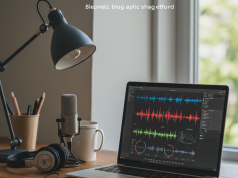Inbound marketing continues to reign as one of the most effective strategies to attract, engage, and nurture potential customers. It focuses on creating valuable content that appeals to your audience and naturally draws them into your sales funnel. But to succeed, you need the right tools in your arsenal, and that’s where inbound marketing collateral comes in.
Whether you’re new to inbound marketing or looking to optimize your campaigns, this blog will show you high-performing inbound marketing collateral examples and how to use them strategically to grow your business.
What Is Inbound Marketing Collateral?
Inbound marketing collateral refers to the resources and content specifically designed to attract and guide potential customers through the buyer’s journey. Unlike traditional outbound methods, which interrupt customers with messages they may not want (like cold calls or pop-up ads), inbound marketing uses collateral to organically bring your audience toward your brand.
High-quality collateral addresses specific customer pain points and provides solutions, positioning your business as a helpful authority in your field. Common examples include blog posts, eBooks, infographics, and email campaigns.
Why is inbound marketing collateral so important? Because it meets customers where they already are, whether that’s scrolling on social media, conducting a Google search, or consuming content that speaks to their interests.
Key Benefits of Using Effective Collateral
- Builds trust: By providing helpful resources, you position your brand as credible and trustworthy.
- Drives traffic: Optimized collateral increases your website’s visibility in search engines.
- Generates leads: Gating certain content behind forms can quickly establish a pipeline of leads.
- Encourages engagement: Interactive content keeps your audience interested and invested.
Must-Have Examples of Effective Inbound Marketing Collateral
While inbound marketing collateral takes many forms, here are some standout examples that have proven to deliver results.
1. Engaging Blog Posts
One of the simplest and most effective forms of inbound marketing is a well-written blog. Blogs allow you to create content that answers specific questions your audience is searching for. For example:
- How-to articles: Provide step-by-step instructions on topics your audience cares about.
- Educational content: Share expert insights to position yourself as a thought-leader.
- Case studies: Highlight customer success stories that showcase your product or service.
By using SEO techniques to optimize your blog posts for relevant keywords, you can increase search engine visibility and attract organic traffic. For instance, if you offer marketing automation software, writing a blog titled “How to Automate Your Marketing Campaigns in 5 Steps” could attract leads looking for marketing tech solutions.
2. Downloadable eBooks and Whitepapers
Want to generate leads while providing extra value? Create free, downloadable eBooks or whitepapers. These assets are often gated, meaning users provide their email addresses to access them. This makes them perfect for lead generation.
Example: If you run a B2B SaaS company, you could create an eBook like “The Ultimate Guide to Increasing Team Productivity With Workplace Tools.” Once prospects download it, you’ve collected a lead and delivered actionable value to your audience.
Pro Tip: Keep your eBooks visually engaging with charts, illustrations, or short paragraphs to maintain reader interest.
3. Eye-Catching Infographics
Infographics are visual pieces of content that condense dense data or statistics into an easy-to-digest format. They’re perfect for social sharing and quickly capturing attention in a crowded content space.
Example: A fitness brand could create an infographic titled “How to Burn 500 Calories in 30 Minutes,” showing different exercises with estimated calorie burns.
Infographics work because people process visuals 60,000 times faster than text. They make even complex information more accessible and memorable.
4. Educational Videos
Video marketing has grown astronomically and for good reason. A video combines storytelling with visual engagement, making complex ideas or products easier to understand.
Examples of inbound video collateral include:
- Explainer videos that introduce how your product works.
- Tutorials demonstrating key features of your offering.
- Customer testimonials shot in a concise, engaging format.
A business offering accounting software could create a 4-minute demo video showing how small businesses can streamline their bookkeeping.
5. Email Campaigns
Email campaigns are a key piece of inbound marketing collateral. They’re highly personal, making it easier to nurture leads and guide them along their buyer’s journey.
Best practices for your inbound email collateral:
- Segment your audience. Send tailored content based on user demographics or behaviors.
- Provide value. Send exclusive offers, insightful resources, or company updates.
- Include a clear call-to-action (CTA). Make sure every email encourages an action, like scheduling a demo or reading a blog.
6. Social Media Content
Social media provides endless opportunities for inbound marketing collateral. From engaging posts to interactive polls, you can use these platforms to start meaningful conversations with your audience.
Examples of what to post:
- Customer testimonials
- Short blog snippets linking back to your website
- Polls and Q&A sessions encouraging engagement
- Behind-the-scenes video peeks into your brand
Social media is also great for showcasing user-generated content, such as reposting customer reviews or photos.
How to Choose the Best Collateral for Your Strategy
With so many options, how do you decide which inbound marketing collateral is right for you? Follow these steps to create a winning strategy:
- Know your audience: Research your target persona’s interests, pain points, and preferred platforms.
- Map the buyer’s journey: Tailor content to each stage (awareness, consideration, and decision-making).
- Focus on value: Make it about solving problems, not just promoting yourself.
- Test and optimize: Measure performance and keep improving. Check metrics like views, shares, and conversions.
Why a Strong Mix of Collateral Matters
Every customer is different. What converts one lead might fall flat for another. Having a variety of collateral ensures you reach a diverse audience and stay top of mind throughout the buying cycle.
Imagine someone Googling “benefits of inbound marketing.” If you have a blog post ready for them, you’ve captured their attention. But to turn them into a lead, offering a downloadable guide like “Top 5 Tools for Your First Inbound Campaign” could seal the deal.
Bring It All Together and Start Creating
Inbound marketing collateral isn’t just about churning out content. It’s about crafting resources that align with your audience’s needs and deliver tangible value. From blogs to emails, each piece should guide prospects along their customer journey while building trust in your brand.
Not sure where to start? Our team of experts is here to help! Request a consultation today and learn how we can help create content that drives results.




